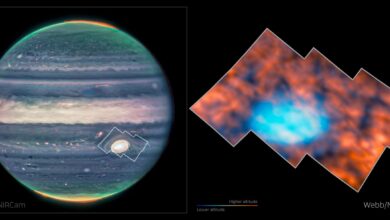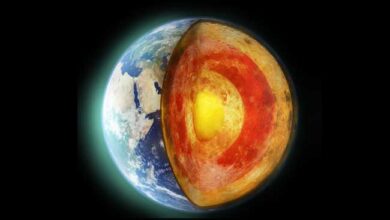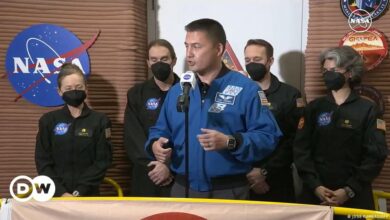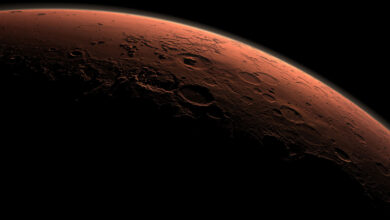Webb Uncovers Ancient Galaxies That Defy Explanation
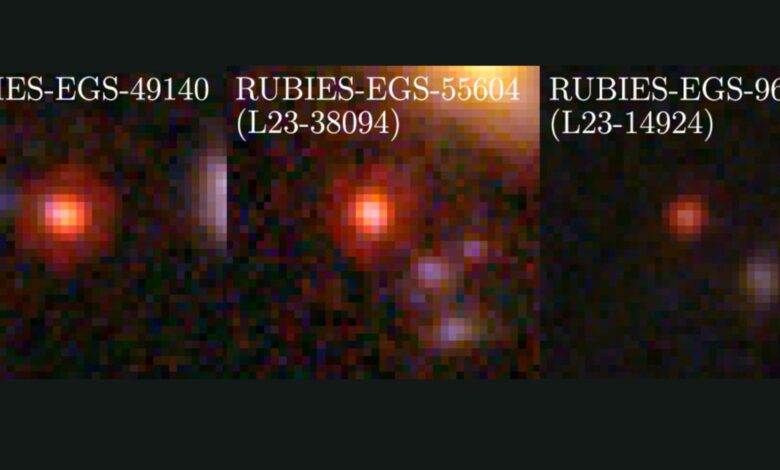
[ad_1]
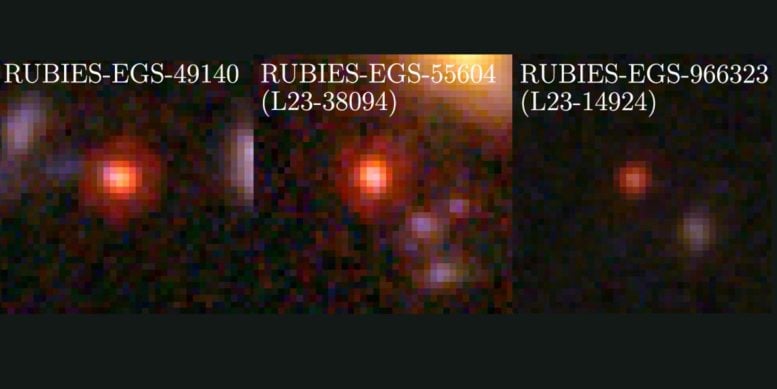
Researchers investigated three mysterious objects in the early universe. Shown here are their color images, composited from three NIRCam filter bands onboard the James Webb Space Telescope. They are remarkably compact at red wavelengths (earning them the term “little red dots”), with some evidence for spatial structure at blue wavelengths. Credit: Bingjie Wang/Penn State
NASA’s James Webb Space Telescope has revealed mysterious objects in the early universe that challenge current theories of galaxy and supermassive black hole evolution.
These objects contain old stars and massive black holes, much larger than expected, suggesting a rapid and unconventional form of early galaxy formation. The findings highlight significant discrepancies with existing models, and the objects’ unique properties indicate a complex early cosmic history.
Breakthrough Discovery in Early Universe
A recent discovery by NASA’s James Webb Space Telescope (JWST) confirmed that luminous, very red objects previously detected in the early universe challenge established ideas about the origins and evolution of galaxies and their supermassive black holes.
Led by researchers from Penn State and utilizing the NIRSpec instrument on JWST as part of the RUBIES survey, the international team identified three enigmatic objects dating back to 600-800 million years after the Big Bang, a time when the universe was just 5% of its current age. They announced the discovery on June 27 in the journal Astrophysical Journal Letters.
The scientists analyzed spectral measurements, or intensity of different wavelengths of light emitted from the objects. Their analysis found signatures of “old” stars, hundreds of millions of years old, far older than expected in a young universe.
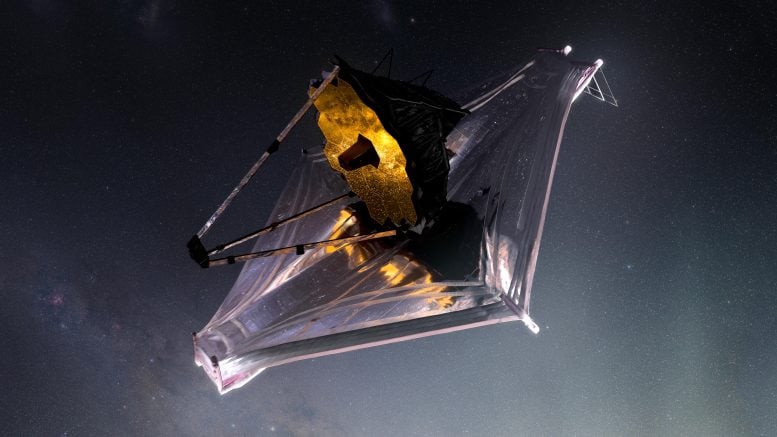
The James Webb Space Telescope (JWST) offers a window into the cosmos’ distant past, capturing images of the universe’s first galaxies and stars that formed over 13.5 billion years ago. Credit: NASA-GSFC, Adriana M. Gutierrez (CI Lab)
Unexpected Findings in Galactic Evolution
The researchers said they were also surprised to discover signatures of huge supermassive black holes in the same objects, estimating that they are 100 to 1,000 times more massive than the supermassive black hole in our own Milky Way. Neither of these is expected in current models of galaxy growth and supermassive black hole formation, which expect galaxies and their black holes to grow together over billions of years of cosmic history.
“We have confirmed that these appear to be packed with ancient stars — hundreds of millions of years old — in a universe that is only 600-800 million years old. Remarkably, these objects hold the record for the earliest signatures of old starlight,” said Bingjie Wang, a postdoctoral scholar at Penn State and lead author on the paper. “It was totally unexpected to find old stars in a very young universe. The standard models of cosmology and galaxy formation have been incredibly successful, yet, these luminous objects do not quite fit comfortably into those theories.”
The researchers first spotted the massive objects in July of 2022, when the initial dataset was released from JWST. The team published a paper in Nature several months later announcing the objects’ existence.
Challenges in Cosmic Observation
At the time, the researchers suspected the objects were galaxies, but followed up their analysis by taking spectra to better understand the true distances of the objects, as well as the sources powering their immense light.
The researchers then used the new data to draw a clearer picture of what the galaxies looked like and what was inside of them. Not only did the team confirm that the objects were indeed galaxies near the beginning of time, but they also found evidence of surprisingly large supermassive black holes and a surprisingly old population of stars.
“It’s very confusing,” said Joel Leja, assistant professor of astronomy and astrophysics at Penn State and co-author on both papers. “You can make this uncomfortably fit in our current model of the universe, but only if we evoke some exotic, insanely rapid formation at the beginning of time. This is, without a doubt, the most peculiar and interesting set of objects I’ve seen in my career.”
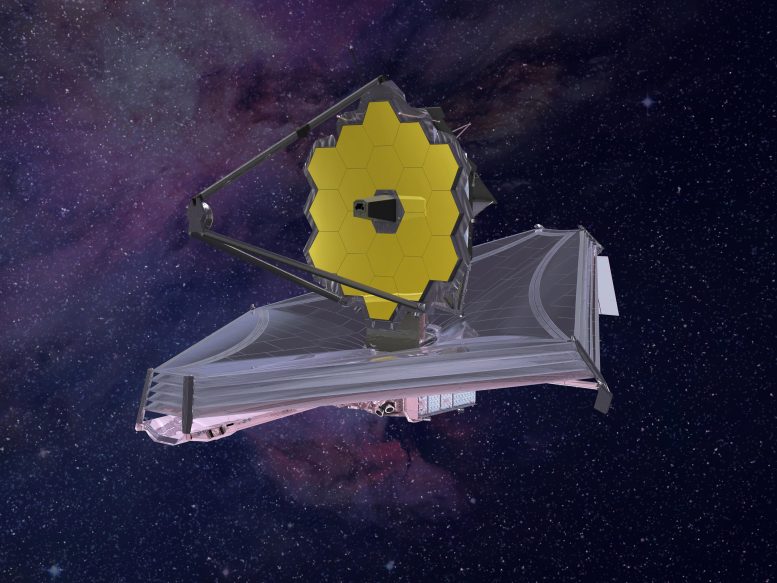
JWST is designed to observe phenomena that occurred just after the Big Bang, using its advanced infrared capabilities to peer through cosmic dust and uncover hidden structures in space. Credit: Northrop Grumman
Mysteries of Ancient Galactic Structures
The JWST is equipped with infrared-sensing instruments capable of detecting light that was emitted by the most ancient stars and galaxies. Essentially, the telescope allows scientists to see back in time roughly 13.5 billion years, near the beginning of the universe as we know it, Leja said.
One challenge to analyzing ancient light is that it can be hard to differentiate between the types of objects that could have emitted the light. In the case of these early objects, they have clear characteristics of both supermassive black holes and old stars. However, Wang explained, it’s not yet clear how much of the observed light comes from each – meaning these could be early galaxies that are unexpectedly old and more massive even than our own Milky Way, forming far earlier than models predict, or they could be more normal-mass galaxies with “overmassive” black holes, roughly 100 to 1,000 times more massive than such a galaxy would have today.
“Distinguishing between light from material falling into a black hole and light emitted from stars in these tiny, distant objects is challenging,” Wang said. “That inability to tell the difference in the current dataset leaves ample room for interpretation of these intriguing objects. Honestly, it’s thrilling to have so much of this mystery left to figure out.”
Aside from their unexplainable mass and age, if part of the light is indeed from supermassive black holes, then they also aren’t normal supermassive black holes. They produce far more ultraviolet photons than expected, and similar objects studied with other instruments lack the characteristic signatures of supermassive black holes, such as hot dust and bright X-ray emission. But maybe the most surprising thing, the researchers said, is how massive they seem to be.
“Normally supermassive black holes are paired with galaxies,” Leja said. “They grow up together and go through all their major life experiences together. But here, we have a fully formed adult black hole living inside of what should be a baby galaxy. That doesn’t really make sense, because these things should grow together, or at least that’s what we thought.”
The researchers were also perplexed by the incredibly small sizes of these systems, only a few hundred light years across, roughly 1,000 times smaller than our own Milky Way. The stars are approximately as numerous as in our own Milky Way galaxy — with somewhere between 10 billion and 1 trillion stars — but contained within a volume 1,000 times smaller than the Milky Way.
Leja explained that if you took the Milky Way and compressed it to the size of the galaxies they found, the nearest star would almost be in our solar system. The supermassive black hole in the center of the Milky Way, about 26,000 light years away, would only be about 26 light years away from Earth and visible in the sky as a giant pillar of light.
“These early galaxies would be so dense with stars — stars that must have formed in a way we’ve never seen, under conditions we would never expect during a period in which we’d never expect to see them,” Leja said. “And for whatever reason, the universe stopped making objects like these after just a couple of billion years. They are unique to the early universe.”
The researchers are hoping to follow up with more observations, which they said could help explain some of the objects’ mysteries. They plan to take deeper spectra by pointing the telescope at the objects for prolonged periods of time, which will help disentangle emission from stars and the potential supermassive black hole by identifying the specific absorption signatures that would be present in each.
“There’s another way that we could have a breakthrough, and that’s just the right idea,” Leja said. “We have all these puzzle pieces and they only fit if we ignore the fact that some of them are breaking. This problem is amenable to a stroke of genius that has so far eluded us, all of our collaborators and the entire scientific community.”
Reference: “RUBIES: Evolved Stellar Populations with Extended Formation Histories at z ∼ 7–8 in Candidate Massive Galaxies Identified with JWST/NIRSpec” by Bingjie Wang, 冰洁 王, Joel Leja, Anna de Graaff, Gabriel B. Brammer, Andrea Weibel, Pieter van Dokkum, Josephine F. W. Baggen, Katherine A. Suess, Jenny E. Greene, Rachel Bezanson, Nikko J. Cleri, Michaela Hirschmann, Ivo Labbé, Jorryt Matthee, Ian McConachie, Rohan P. Naidu, Erica Nelson, Pascal A. Oesch, David J. Setton and Christina C. Williams, 26 June 2024, The Astrophysical Journal Letters.
DOI: 10.3847/2041-8213/ad55f7
Wang and Leja received funding from NASA’s General Observers program. The research was also supported by the International Space Science Institute in Bern. The work is based in part on observations made with the NASA/ESA/CSA James Webb Space Telescope. Computations for the research were performed on Penn State’s Institute for Computational and Data Sciences’ Roar supercomputer.
Other co-authors on the paper are Anna de Graaff of the Max-Planck-Institut für Astronomie in Germany; Gabriel Brammer of the Cosmic Dawn Center and Niels Bohr Institute; Andrea Weibel and Pascal Oesch of the University of Geneva; Nikko Cleri, Michaela Hirschmann, Pieter van Dokkum and Rohan Naidu of Yale University; Ivo Labbé of Stanford University; Jorryt Matthee and Jenny Greene of Princeton University; Ian McConachie and Rachel Bezanson of the University of Pittsburgh; Josephine Baggen of Texas A&M University; Katherine Suess of the Observatoire de Sauverny in Switzerland; David Setton of Massachusetts Institute of Technology’s Kavli Institute for Astrophysics and Space Research; Erica Nelson of the University of Colorado; Christina Williams of the U.S. National Science Foundation’s National Optical-Infrared Astronomy Research Laboratory and the University of Arizona.
[ad_2]
Source link

